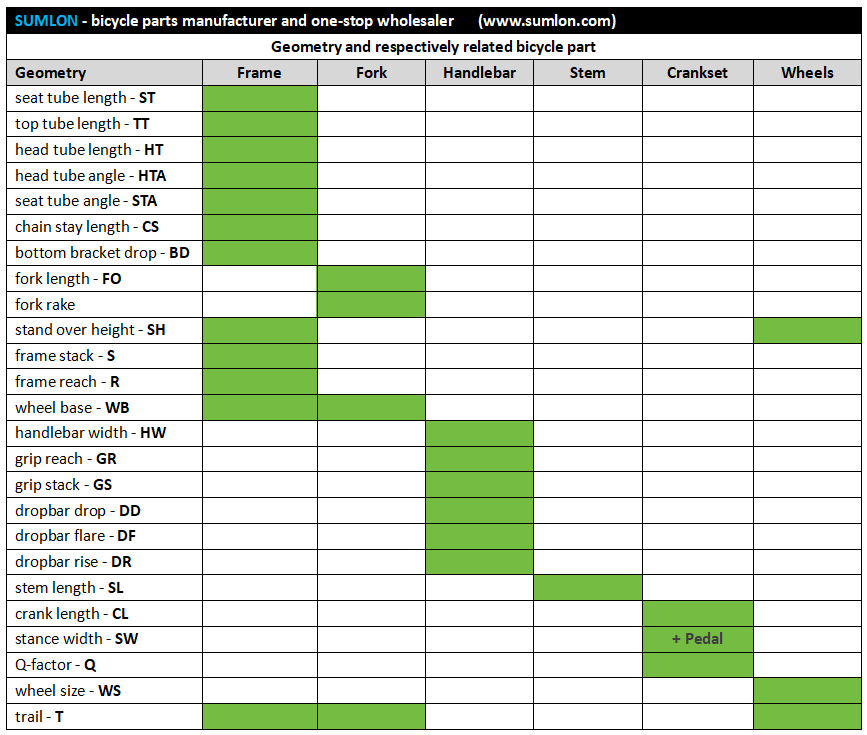Bike Geometry Explained: Basics, Charts and Comparison
The bike geometry settings directly affects the comfort and adaptability of riding. Understanding the geometric design of bicycles is crucial for selecting, adjusting, and riding bicycles. The geometric design of bicycles is an important reference for cyclists when adjusting their bikes. It can ensure that the new bicycle matches the rider’s body size and riding style.
Many beginners may not be familiar with it. Not only does the frame have geometric settings, but bicycle parts such as drop bars, cranksets, seats, and wheels all have their specific geometric settings. The following text will provide a detailed explanation of common geometric settings related to different bicycle parts.
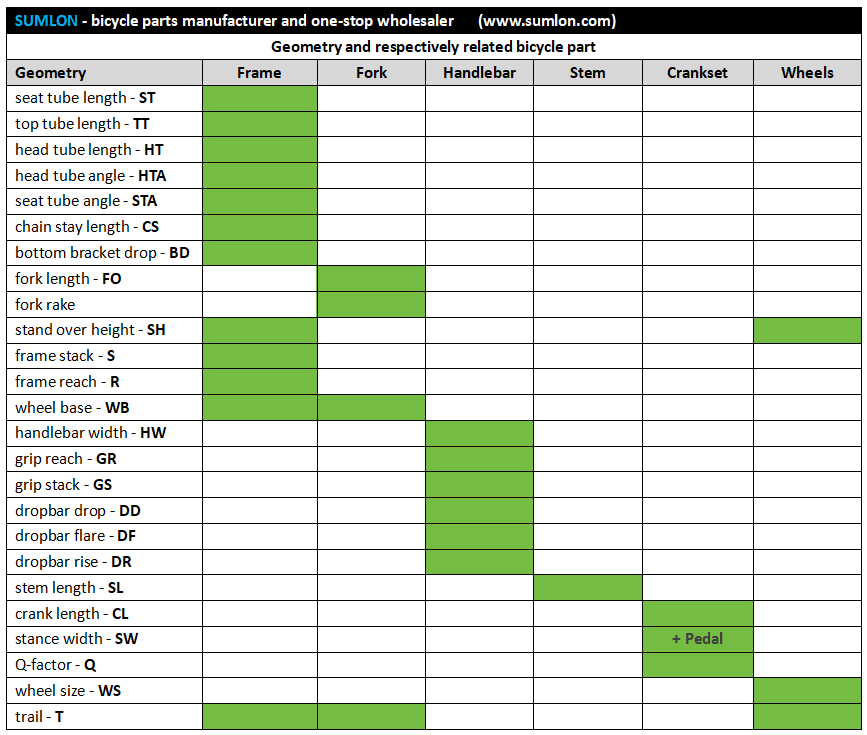
1. Bike Geometry related to the frame
The setting and design of the frame geometry is one of the most important core settings for every different bicycle brand. Every bicycle brand has its unique characteristics in terms of frame geometry.
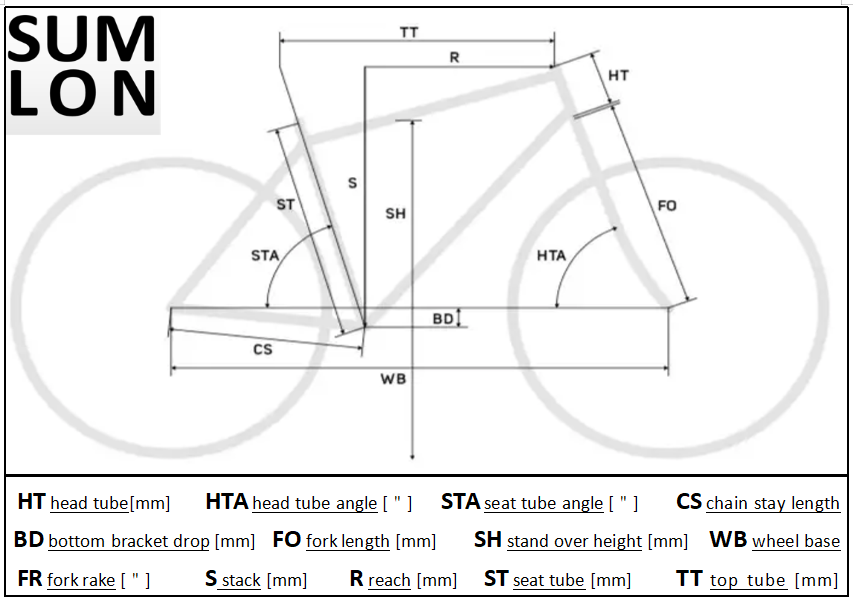
1.1 Seat tube length – STL
Seat tube length in bike geometry is the measurement from the center of the bottom bracket to the top of the seat tube. It influences rider position and comfort. A longer seat tube promotes a stretched-out, aerodynamic posture, potentially enhancing speed and power transfer. Conversely, a shorter seat tube encourages a more upright position, prioritizing comfort and control. Finding the right balance between these factors is crucial for optimizing performance and rider comfort.
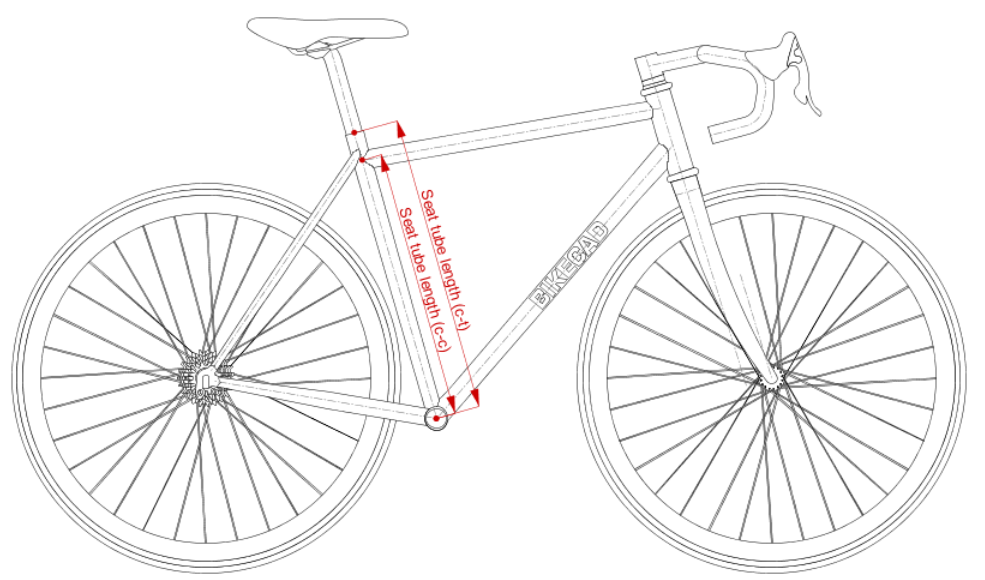
1.2 Top tube length -TTL
Top tube length: The top tube length in bike geometry measures the horizontal distance between the seat tube and the head tube. It affects the rider’s reach and overall bike fit. A longer top tube may provide a more stretched-out riding position, favoring aerodynamics and power transfer. Conversely, a shorter top tube promotes a more upright position, enhancing comfort and maneuverability. Achieving the right balance between top tube length and rider preference is essential for optimal comfort, control, and performance while cycling.
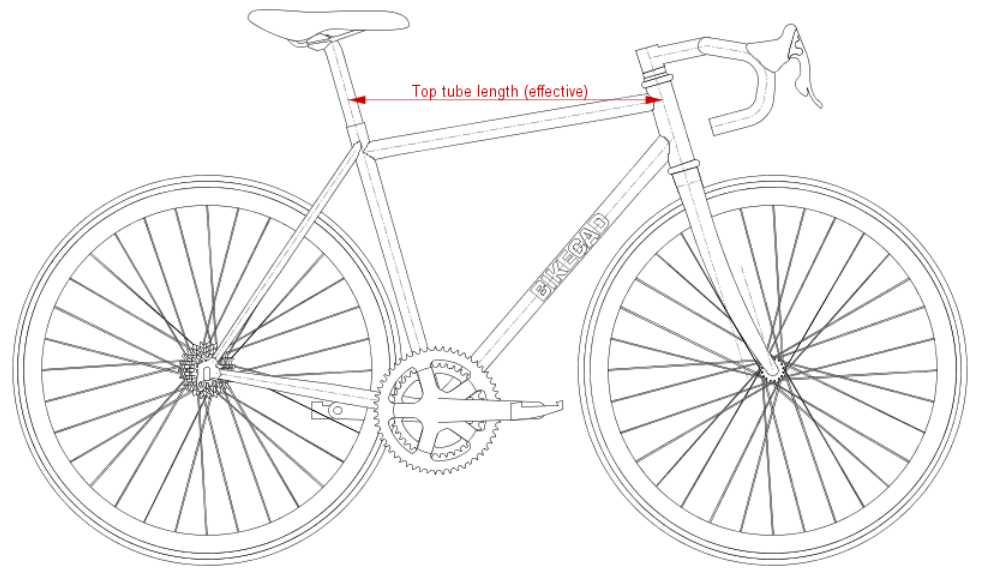
1.3 Head tube length – HTL
Head tube length: The head tube length in bicycle geometry influences the rider’s riding position and handling characteristics. A longer head tube results in a more upright riding position, favoring comfort and stability, suitable for endurance or recreational riding. Conversely, a shorter head tube creates a more aggressive, aerodynamic position, enhancing speed and agility, ideal for racing or performance-oriented riding. Finding the appropriate head tube length depends on a rider’s preferences, riding style, and comfort requirements.
1.4 Head tube angle – HTA
Head tube angle: The head tube angle in bike geometry refers to the angle between the head tube and the ground. It determines the bike’s steering responsiveness and stability. A steeper head tube angle results in quicker, more responsive handling, suitable for aggressive riding and tight turns. In contrast, a shallower angle provides stability at high speeds and over rough terrain, ideal for endurance rides and descents. Choosing the appropriate head tube angle depends on rider preferences, intended riding style, and terrain conditions to optimize control and confidence while cycling.
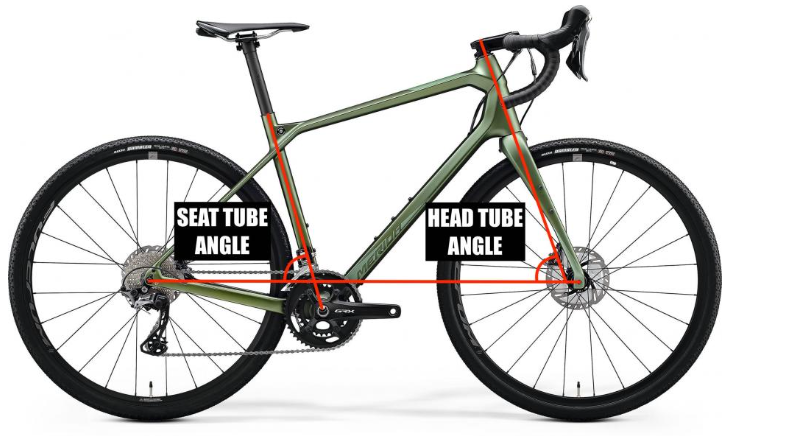
1.5 Seat tube angle – STA
Seat tube angle: The seat tube angle in bike geometry measures the angle between the seat tube and the ground. It determines the rider’s seated position and pedaling efficiency. A steeper seat tube angle positions the rider more forward, enhancing power transfer and aerodynamics, commonly found in racing bikes. Conversely, a slacker seat tube angle places the rider further back, prioritizing comfort and stability, often seen in endurance or recreational bikes. Selecting the appropriate seat tube angle depends on the rider’s preferences, riding style, and intended use, ensuring optimal comfort, power output, and overall cycling experience.
1.6 Chain stay length – CSL
Chain stay length: The chainstay length in bike geometry is the distance between the bottom bracket and the rear wheel dropout. It influences the bike’s handling characteristics, stability, and acceleration. Shorter chainstays typically result in a more agile and responsive ride, ideal for tight corners and technical terrain. Conversely, longer chainstays provide stability at high speeds and over rough terrain, enhancing comfort and traction. Choosing the appropriate chainstay length depends on the rider’s preferences, intended riding style, and terrain conditions, ensuring optimal balance between agility, stability, and overall cycling performance.
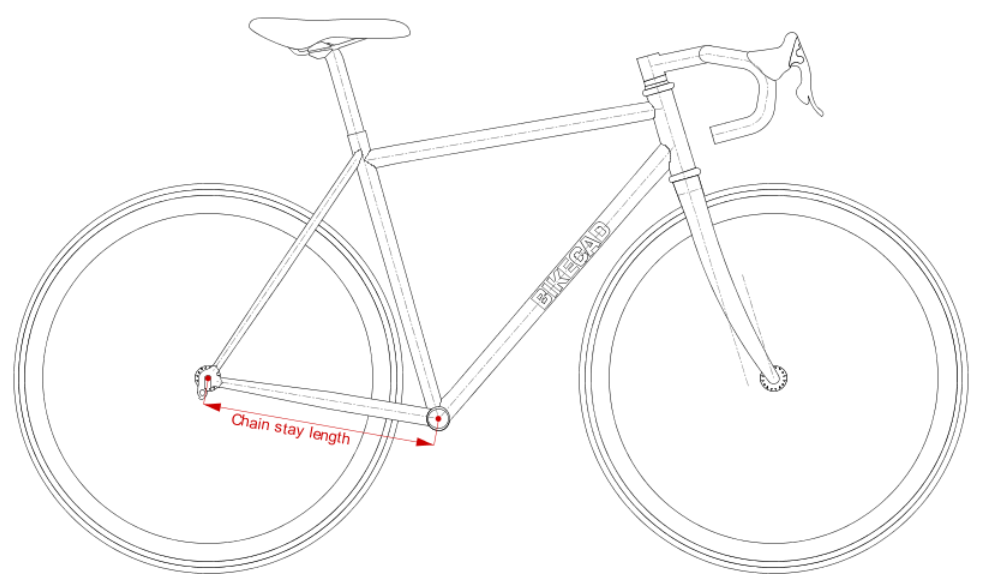
1.7 Bottom bracket drop -BBD
Bottom bracket drop: The bottom bracket drop in bike geometry refers to the vertical distance between the bottom bracket axle and an imaginary line drawn between the two wheel axles. It influences the bike’s center of gravity, stability, and cornering ability. A higher bottom bracket drop lowers the center of gravity, enhancing stability and cornering confidence, ideal for aggressive riding and tight turns. Conversely, a lower bottom bracket drop provides a more planted feel and improves straight-line stability, suitable for endurance or touring bikes. Choosing the appropriate bottom bracket drop depends on rider preferences, intended riding style, and terrain conditions for optimal cycling performance.
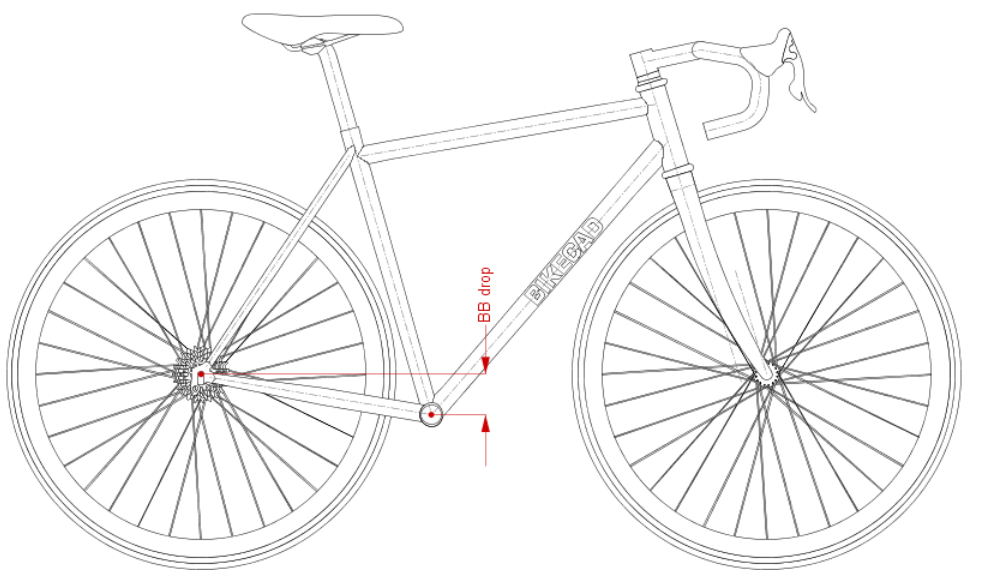
1.8 Frame stack – FS
Frame stack: The frame stack in bike geometry measures the vertical distance from the center of the bottom bracket to the top of the head tube. It determines the bike’s handlebar height and the rider’s upright position. A higher frame stack provides a more relaxed and comfortable riding posture, ideal for long-distance or recreational cycling. Conversely, a lower frame stack promotes a more aggressive and aerodynamic position, suitable for racing or performance-oriented riding. Choosing the appropriate frame stack depends on rider preferences, intended riding style, and comfort requirements to optimize comfort, control, and overall cycling experience.
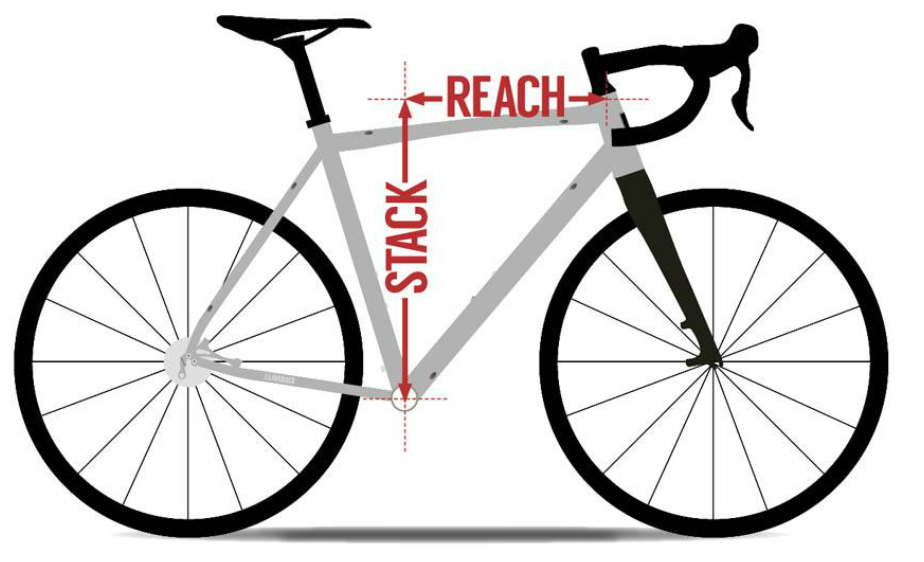
1.9 Frame reach – FR
Frame reach: The frame reach in bike geometry measures the horizontal distance from the center of the bottom bracket to the center of the head tube. It determines the bike’s length and the rider’s reach to the handlebars. A longer frame reach provides a more stretched-out riding position, promoting aerodynamics and power transfer, ideal for racing or aggressive riding. Conversely, a shorter frame reach offers a more upright position, prioritizing comfort and control, suitable for leisure or endurance riding. Choosing the appropriate frame reach depends on rider preferences, intended riding style, and comfort requirements for optimal cycling performance.
2. Bike Geometry related to the handlebar and stem
2.1 Handlebar width – HW
Handlebar width: Handlebar width in bike geometry refers to the distance between the ends of the handlebars. It affects a rider’s stability, control, and comfort. Wider handlebars typically provide better leverage for steering, enhancing stability and control, especially on rough terrain or at high speeds. However, excessively wide handlebars may hinder maneuverability or cause discomfort for some riders. Narrower handlebars offer improved aerodynamics and may be preferred for racing or technical riding. Choosing the appropriate handlebar width depends on rider preferences, body proportions, and intended use for optimal handling and comfort while cycling.
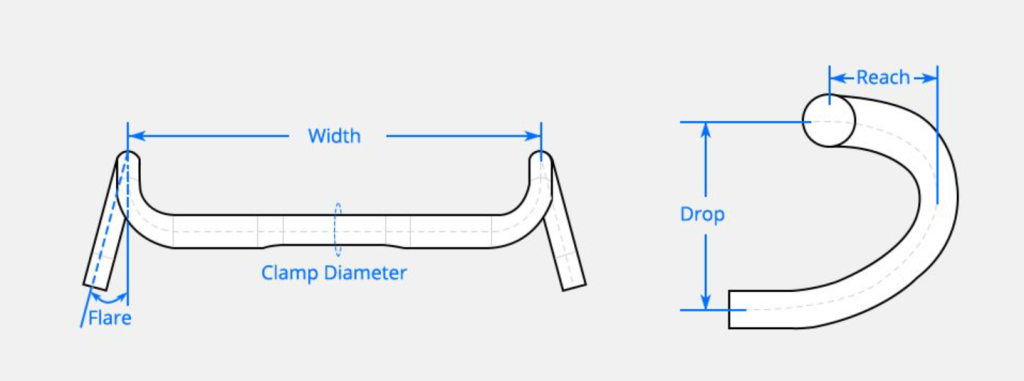
2.2 Grip reach – GR
Grip reach: Grip reach in bike geometry refers to the horizontal distance from the center of the handlebar to the point where the rider’s hands make contact with the grips. It affects rider comfort, control, and handling. A longer grip reach may provide a more stretched-out riding position, promoting aerodynamics and power transfer, suitable for racing or aggressive riding. Conversely, a shorter grip reach offers a more upright position, prioritizing comfort and control, ideal for endurance or recreational riding. Finding the right balance of grip reach depends on rider preferences, body proportions, and intended use for optimal cycling performance.
2.3 Dropbar drop – DD
Dropbar drop: Drop in dropbar geometry refers to the vertical distance between the top of the handlebar and the bottom of the drops. It influences rider posture, comfort, and aerodynamics. A larger drop provides a more aggressive, aerodynamic riding position, enhancing speed and power transfer, suitable for racing or performance-oriented riding. Conversely, a smaller drop offers a more relaxed position, prioritizing comfort and control, ideal for endurance or recreational riding. Choosing the appropriate drop depends on rider preferences, body proportions, and intended use for optimal comfort, control, and performance while cycling.
2.4 Dropbar flare – DF
Dropbar flare: Dropbar flare in bicycle geometry refers to the outward angle of the drops on a drop handlebar. It affects rider comfort, control, and handling. A greater flare provides more wrist clearance and stability, enhancing control and comfort, particularly on rough terrain or during technical descents. However, excessive flare may compromise aerodynamics and hand positions on the tops of the bars. Choosing the appropriate dropbar flare depends on rider preferences, riding style, and terrain conditions for optimal comfort, control, and performance while cycling.
2.5 Grip stack – GS
Grip stack: Grip stack in bike geometry measures the vertical distance from the center of the handlebar to the top of the grip. It influences rider comfort, posture, and handling. A higher grip stack may result in a more upright riding position, prioritizing comfort and control, suitable for leisure or commuting. Conversely, a lower grip stack promotes a more aggressive, aerodynamic position, enhancing speed and power transfer, ideal for racing or performance-oriented riding. Choosing the appropriate grip stack depends on rider preferences, body proportions, and intended use for optimal comfort, control, and performance while cycling.
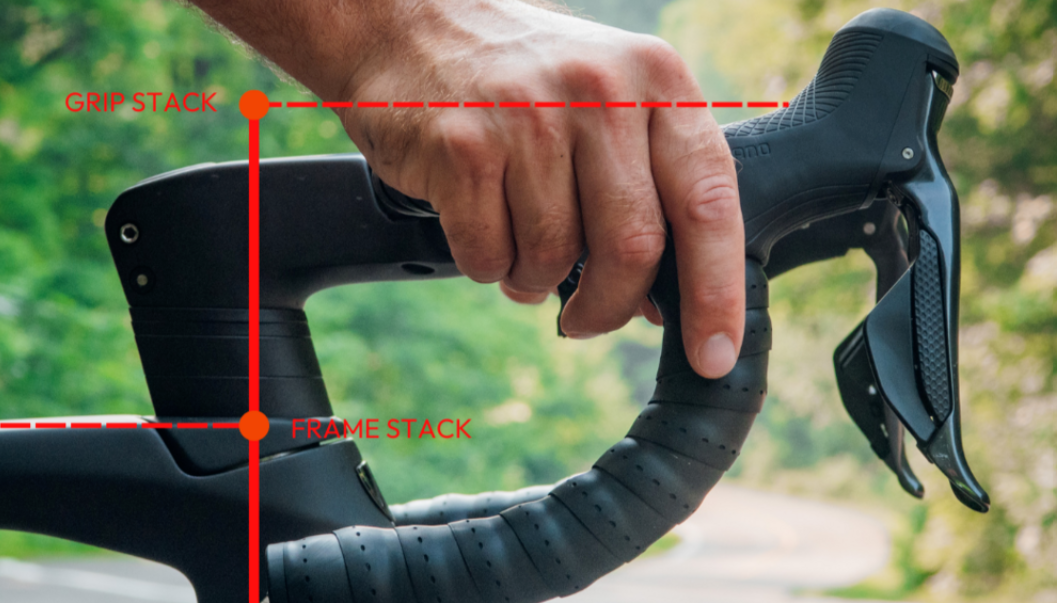
2.6 Dropbar rise -DS
Dropbar rise: Dropbar rise in bicycle geometry refers to the vertical height difference between the highest point of the handlebar and the lowest point of the drops. It affects rider posture, comfort, and control. A higher rise promotes a more upright riding position, prioritizing comfort and control, ideal for leisure or commuting. Conversely, a lower rise encourages a more aggressive, aerodynamic position, enhancing speed and power transfer, suitable for racing or performance-oriented riding. Choosing the appropriate dropbar rise depends on rider preferences, body proportions, and intended use for optimal comfort, control, and performance while cycling.
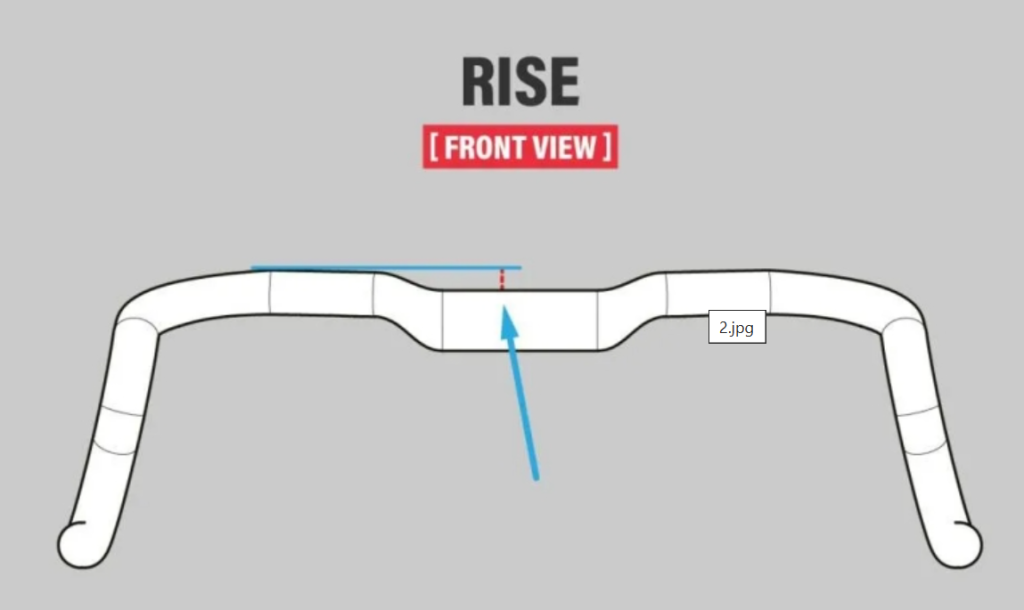
2.7 Stem Length – SL
Stem length: Stem length in bicycle geometry measures the distance from the center of the handlebar to the center of the steerer tube. It influences rider reach, handling, and comfort. A longer stem may provide a more stretched-out riding position, promoting aerodynamics and power transfer, suitable for racing or aggressive riding. Conversely, a shorter stem offers a more upright position, prioritizing comfort and control, ideal for endurance or recreational riding. Choosing the appropriate stem length depends on rider preferences, body proportions, and intended use for optimal comfort, control, and performance while cycling.
3. Bike Geometry related to the crankset and pedal
3.1 Crank length – CL
Crank length: The crank length in bike geometry refers to the distance from the center of the bottom bracket to the center of the pedal spindle. It affects the rider’s biomechanics, power output, and comfort. Longer crank arms may provide more leverage and power but can also lead to increased knee flexion and potential discomfort for some riders. Conversely, shorter crank arms may reduce knee strain but could sacrifice power output. Selecting the appropriate crank length depends on rider anatomy, riding style, and personal preference to optimize efficiency and comfort while cycling.
3.2 Stance width – SW
Stance width: Stance width in bike geometry refers to the horizontal distance between the centers of the pedal spindles when the cranks are parallel to the ground. It impacts the rider’s stability, comfort, and biomechanics. A wider stance width can provide increased stability and power transfer, especially for larger riders or those with wider hips. However, too wide a stance may lead to inefficient pedaling mechanics and discomfort. Conversely, a narrower stance width may enhance pedaling efficiency but could compromise stability. Selecting the appropriate stance width depends on rider anatomy, riding style, and comfort requirements for optimal cycling performance.
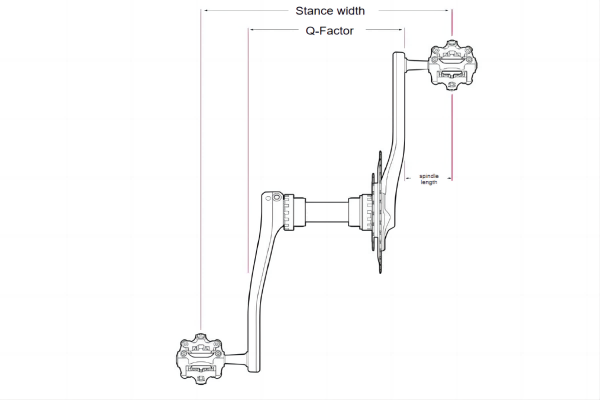
3.3 Q-factor
Q-factor: The Q-factor in bike geometry measures the lateral distance between the pedal attachment points on the crank arms. It influences the rider’s biomechanics, comfort, and efficiency. A narrower Q-factor may promote a more natural and efficient pedaling motion, reducing the risk of knee strain and improving power transfer. However, too narrow a Q-factor can lead to decreased stability and potential discomfort for some riders. Conversely, a wider Q-factor may enhance stability but could compromise pedaling efficiency and lead to increased hip and knee stress. Finding the optimal Q-factor depends on rider anatomy and comfort preferences for optimal cycling performance.
4. Other bike geometries
41. Wheel size – WS
Wheel size: Wheel size in bike geometry refers to the diameter of the wheels, typically measured in inches or millimeters. It profoundly impacts a bike’s handling, comfort, and performance. Larger wheels generally roll over obstacles more smoothly, provide better traction, and maintain momentum efficiently. Conversely, smaller wheels offer quicker acceleration, are lighter, and can enhance maneuverability. Selecting the appropriate wheel size depends on rider preferences, terrain, and intended use. Larger wheels are common on road and mountain bikes, while smaller wheels are often found on folding bikes, BMX, and some commuter bikes.
4.2 Fork length – FL
Fork length: Fork length in bike geometry refers to the distance from the bottom of the steerer tube to the dropouts where the wheel attaches. It affects the bike’s handling, comfort, and stability. A longer fork length typically results in a more relaxed, comfortable ride, absorbing bumps and vibrations better, suitable for endurance or recreational riding. Conversely, a shorter fork length can provide more responsive handling and sharper cornering, ideal for aggressive riding or racing. Choosing the appropriate fork length depends on rider preferences, terrain conditions, and intended use for optimal comfort, control, and performance while cycling.
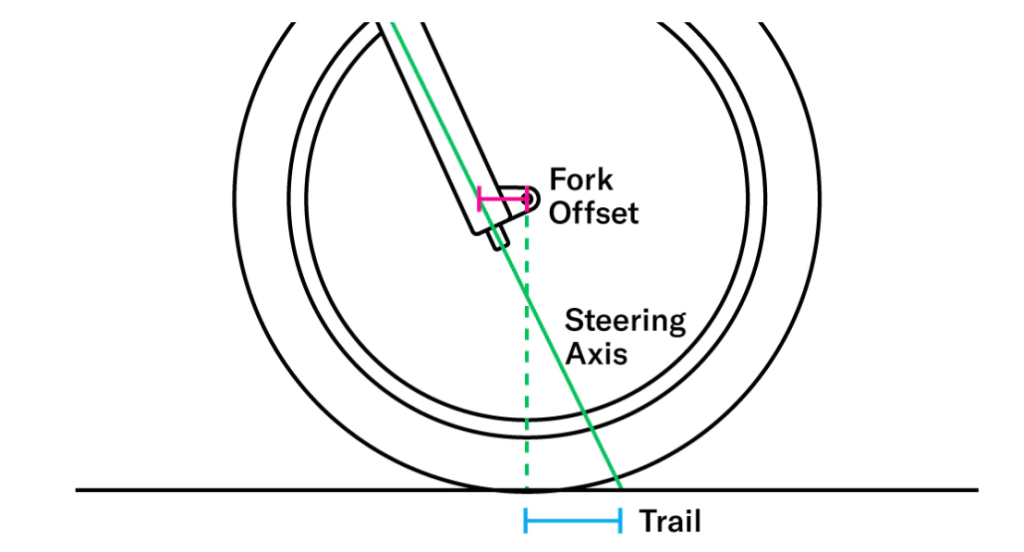
4.3 Fork rake – FR
Fork rake: Fork rake in bicycle geometry refers to the forward offset of the front wheel axle from the steering axis. It affects a bike’s handling, stability, and steering responsiveness. A greater fork rake typically results in more stable and predictable handling, particularly at high speeds or on rough terrain. However, excessive rake may compromise agility and responsiveness. Conversely, less rake provides quicker steering response and agility, ideal for technical riding or maneuvering through tight spaces. Choosing the appropriate fork rake depends on rider preferences, bike design, and intended use for optimal control, comfort, and performance while cycling.
4.4 Trail
Trail: Trail in bike geometry refers to the horizontal distance between the point where the front wheel touches the ground and the point where the steering axis intersects the ground. It influences a bike’s stability, handling, and steering responsiveness. A larger trail generally results in more stable and predictable handling, suitable for relaxed riding or touring. Conversely, a smaller trail provides quicker steering response and agility, ideal for technical terrain or aggressive riding. Finding the right balance of trail depends on rider preferences, bike design, and intended use for optimal control and comfort while cycling.
4.5 Stand over height – SOH
Stand over height: Standover height in bike geometry is the distance between the ground and the top tube of the frame when a rider straddles the bike with both feet flat on the ground. It impacts rider comfort, safety, and bike fit. A lower standover height provides easier mounting and dismounting, especially for shorter riders or in stop-and-go traffic. Conversely, a higher standover height may offer more clearance for aggressive riding or larger frame sizes but could be less accessible for some riders. Choosing the appropriate standover height ensures a safe and comfortable fit for optimal control and confidence while cycling.
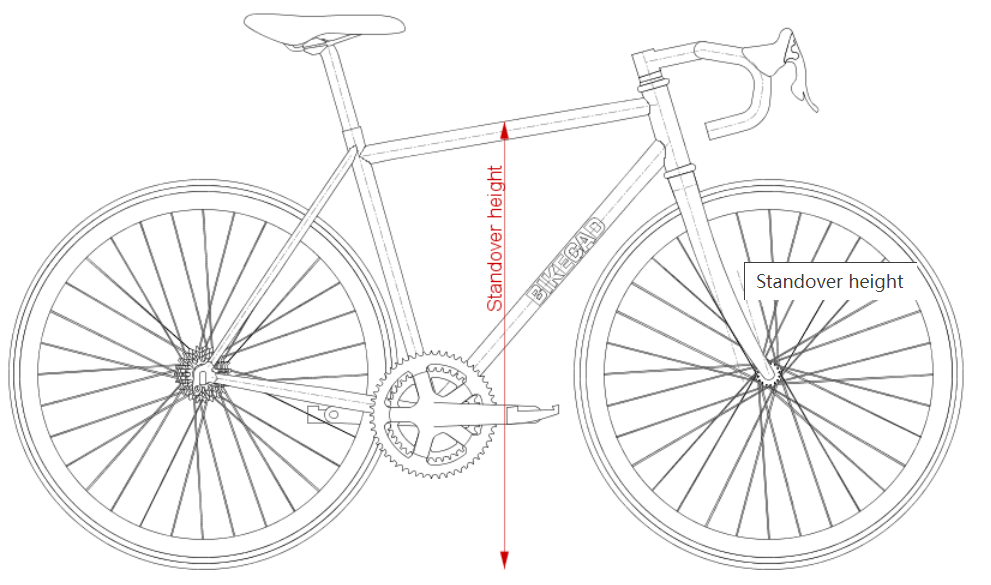
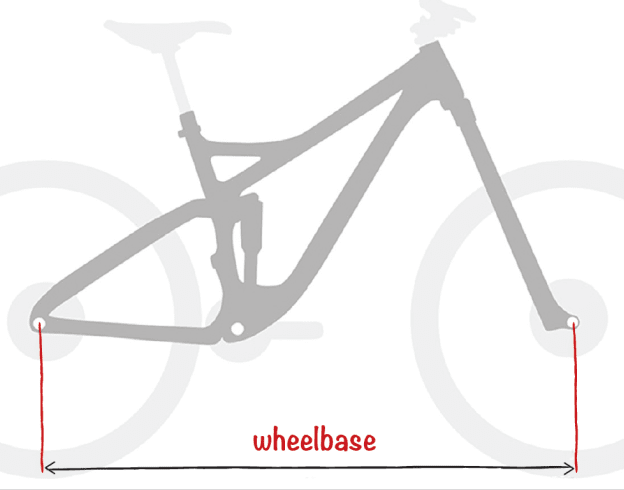
4.6 Wheel base – WB
Wheel base: Wheelbase in bike geometry refers to the distance between the centers of the front and rear wheels. It influences a bike’s stability, maneuverability, and ride quality. A longer wheelbase typically provides more stability at high speeds and over rough terrain, suitable for touring or endurance riding. Conversely, a shorter wheelbase offers quicker handling and agility, ideal for technical terrain or aggressive riding. Finding the right balance of wheelbase depends on rider preferences, terrain conditions, and intended use for optimal control, comfort, and performance while cycling.
BTW, SUMLON have been manufacturing bicycle parts for over 15 years. Contact us if you are looking for a bike parts factory or a one-stop wholesaler. Peace.


